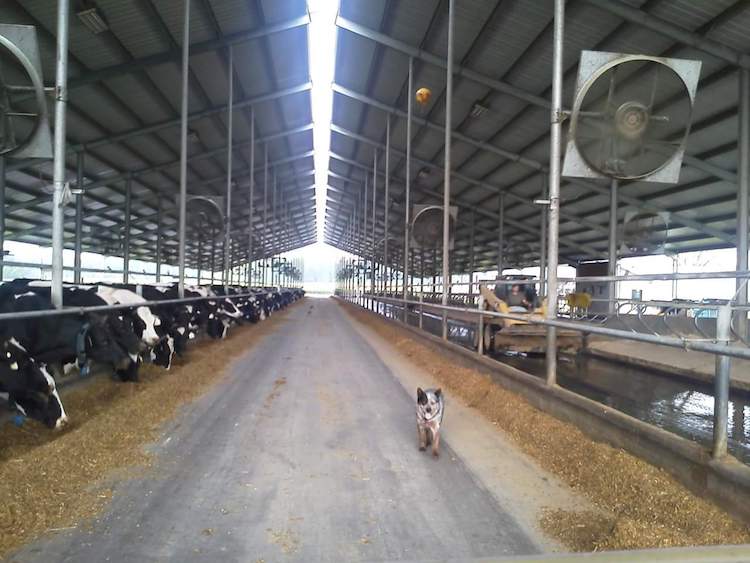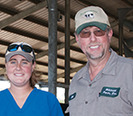
Uncertain times in the dairy world make our road to robotic milking scary, but here we go. We are finally finished with our plans to add robots on the sides of our conventional freestall flush barn. It required many conversations with our robotic equipment company (DeLaval), our family, consultants, contractors, and our engineering team at JGM3. We finally have a plan that we all seem to like.
Some of the considerations that we had to think about are different than the robotic farms we toured in Wisconsin, Minnesota, and those under construction in South Carolina and Tennessee. Here are a few of those considerations:
1. The Savannah River Valley is hot, humid, and rainy most of the year. Cow cooling near the robot is a big consideration.
2. We have a flush barn, while all the dairies up north were scrape barns and did not have the slopes that we have to flush a barn. Robots have to be on a flat surface.
3. The new VMS300 model of robot has a different footprint, screen height, pit depth, and cow capacity. This affects the amount of freestalls required per robot.
Other features we added are a new close-up and dry cow facility, as well as using part of the existing barn for far-off dry cow housing. Finally, we figured out how to best repurpose the existing parlor’s holding area into a hospital pen for any fresh or sick cows.
Now that I have a plan in place, I can finally get bids on structures and start moving dirt. (My favorite job is playing in the dirt!) Follow our progress here on HD Notebook and on Facebook.

Mark and Caitlin Rodgers are dairy farmers in Dearing, Georgia. Their “Father and Daughter Dairy Together” column appears every other Thursday on HD Notebook. The Rodgers have a 400-cow dairy that averages 32,000 pounds of milk. Follow their family farm on Facebook at Hillcrest Farms Inc.